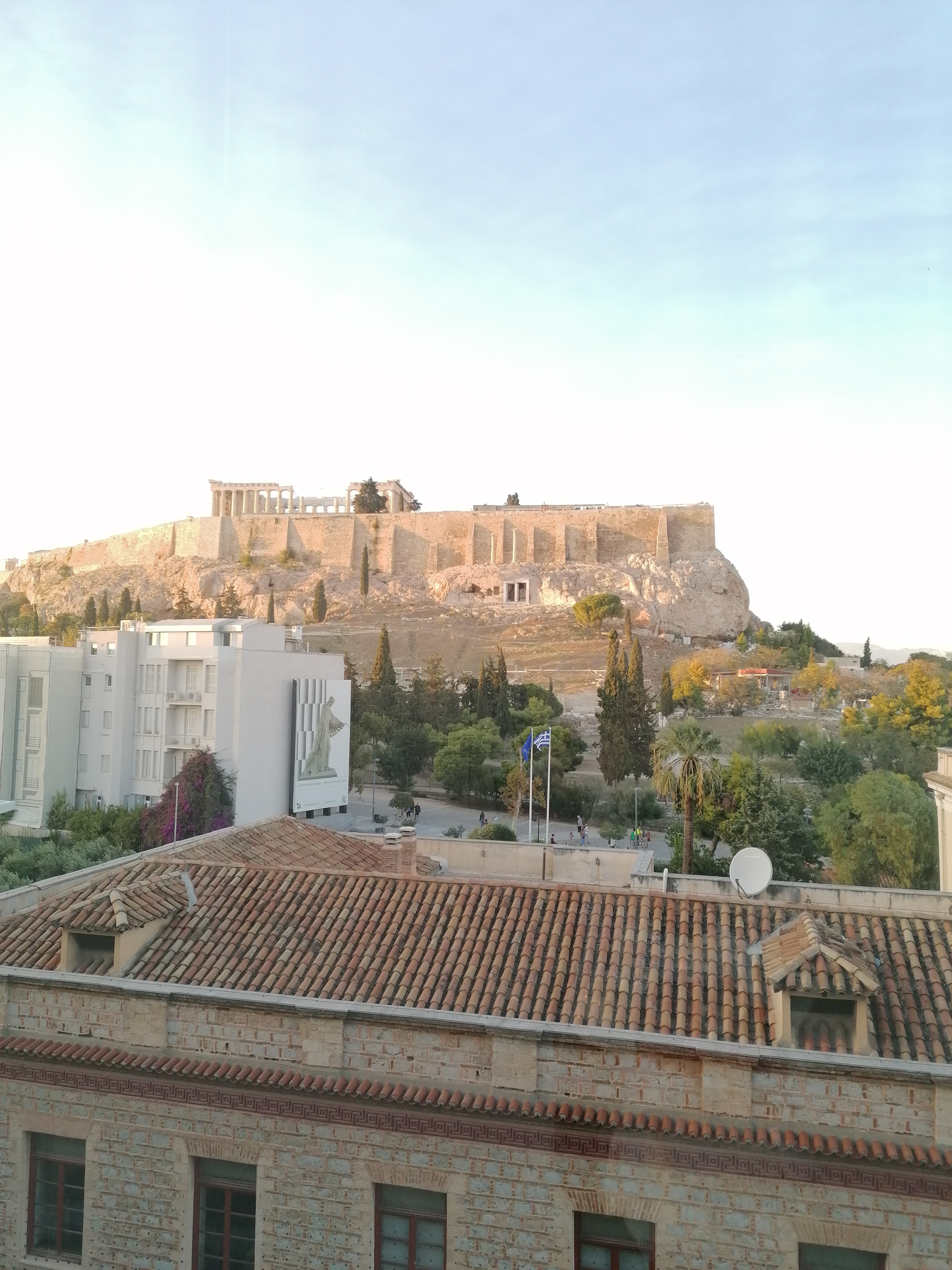Our Classics trip to Greece – a student’s perspective.
During the October half term, I went on the Classics trip to Greece! Not only did I get to see everything I have learnt from GCSE Classics in real life, I also got to experience Greek culture and spend time with my friends.
Our trip started early on the Friday morning. As the mist lay upon the crescent walkway outside the Elms, we boarded the coach and ventured towards Heathrow airport.
Upon our arrival in Greece, we were greeted by the sun and our visit began at the Acropolis Museum, with its clear views of the Acropolis itself, as well as the Parthenon.
 A quick sleep later, our first full day in Greece saw us exploring Athens on foot and via the metro. The first archaeological site we visited was, rightfully so, the Acropolis, the Parthenon, and the theatre of Dionysus. As we hiked up the Acropolis the view overlooking the entirety of Athens was one that was worth the hike! Coming down from the famous hill we descended into the ancient agora – the site of the Athens marketplace, had lunch and then a very informative afternoon tour of the Plaka which is known to be the oldest neighbourhood in Athens.
A quick sleep later, our first full day in Greece saw us exploring Athens on foot and via the metro. The first archaeological site we visited was, rightfully so, the Acropolis, the Parthenon, and the theatre of Dionysus. As we hiked up the Acropolis the view overlooking the entirety of Athens was one that was worth the hike! Coming down from the famous hill we descended into the ancient agora – the site of the Athens marketplace, had lunch and then a very informative afternoon tour of the Plaka which is known to be the oldest neighbourhood in Athens.
Our time in Athens ended the following morning, after a visit to the National Archaeological Museum which houses most of the excavated artefacts from all around Greece.
Before moving on to Delphi, we stopped in at the archaeological museum of Thebes, birthplace of Heracles. Our evening in Delphi introduced us not only to breath-taking mountain views, but also to a local taverna’s Greek dish called pastitsio - Greek Lasagne.
Delphi, we learned, is known to be where many Ancient Greeks journeyed to, for a reading from the Oracle who, according to Homer, was a messenger from Apollo, the God of prophecy. A visit to the archaeological sites and museum ended our time in Delphi.
The next stop on our agenda was Olympia where we visited the Temple of Zeus (one of the seven wonders of the ancient world!) where the Olympics would have been held in ancient times. En route, we also visited a store that specialises in olive oil, where we learned how olive oil was categorised by acidity, extraction process and type of olives.
After spending time inland, high above sea level, the next destination took us down to the seaside village of Tolo where we visited the ruins of the ancient cities. Mycenae and Tiryns were both well preserved cities that allowed us to link myths to actual locations. Lunch in Nafplio was with a view of the harbour which gave ancient Greeks access to trading sea routes. The final archaeological site of the day was the Epidavros theatre which showed us how the ancient Greeks took advantage of the hilly terrain to increase the acoustics so that even the people at the very back could hear the slightest whisper.
Before our departure from Greece, we went to one last archaeological site, the temple of Poseidon at Sounion, which is said to be where the ancient Greeks stopped and made offerings to Poseidon, God of the sea, in hope of a safe journey.
This Classics trip was the most enjoyable trip and an ideal way to mark the return of school trips after the pandemic. It could not have happened without all the teachers involved, who dedicated time and effort into ensuring the trip was the best that it could be.
Alice W., St Mary’s Sixth Form